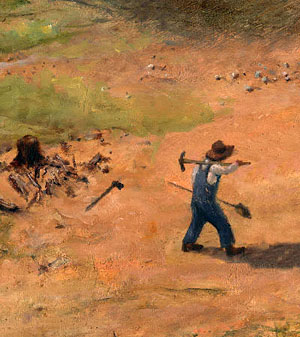
Second son, Charley, is returning from the fields carrying his tools. He had spent a long, hot day of weeding the garden, chopping wood, and digging up boulders to clear more farmland.
All those big rocks were piling up, and soon he and his dad would start on another rock wall. He was proud of all the rock fences they had built on the farm. They had built a rock corral to contain the horses and another big wall around the garden area, to keep animals from wandering in and eating their their prized vegetables! There was also a field of corn and a cash crop of cotton nearly ready for harvest. Charley had cleared and planted those fields with his dad, and he was proud to see their labors pay off.
Even after a hard day’s work, Charley knew he would still need to spend some time cleaning and sharpening his tools before supper. His dad always taught him to give respect to their tools, just like he did himself, by keeping them sharp and ready.
See what the archeologists found!

The Williams farm must have been a very busy operation! Archeologists found many types of tools used for gardening and farming in the fields. While some work had to be done by hand, other work was done with machinery, such as a plow pulled by horses and mules.

Specific tools used for farming and gardening include a set of pruning shears, the blades of two garden hoes, and a worn out pick-mattock.
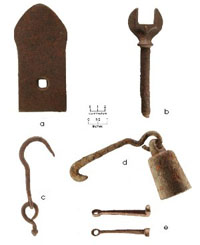
These items likely saw a variety of uses on the farm, from digging up rocks and tree roots, to preparing the garden bed and tending vegetables. We also might guess that Sarah might have wanted some roses planted near the house.
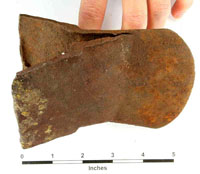
The pick mattock is a very handy tool that combines the pointed head of a pick, used for digging up hard soil and rock, and an adze, which can be used for cutting through roots. Ransom Williams and his sons probably used the pick mattock to clear the higher ground on their property for farming.
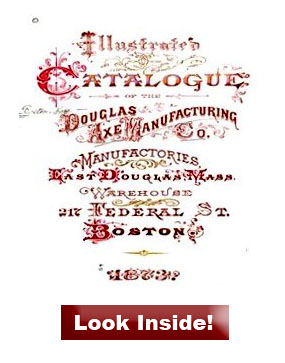
The archeologists identified the rusted pick mattock found at the farm in an 1873 tool catalogue, based on the name, "Hunt," stamped on the tool. It was manufactured by the Douglas Axe Manufacturing Company in Massachusetts.
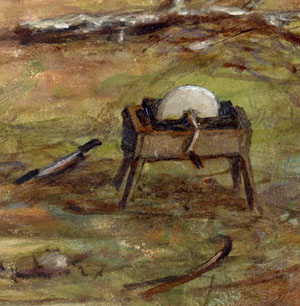
In order to till the land, some form of plow was needed. Archeologists found a piece of a plow called a jointer blade. In order to attach the farm machinery to the horse or mule, a clevis was used; in this case a clevis pin wrench. This multifunctional tool was used to tighten various nuts and bolts on the machinery. Other tool parts found at the farm were from a scale used to weigh crops, such as cotton.
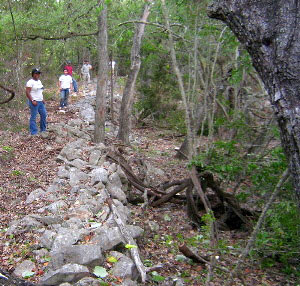
The Williams men probably cut a number of trees on the farm, using some of the wood to build their cabin. They also needed a steady supply of fire wood for cooking and heating the cabin. For these tasks they needed a strong axe.
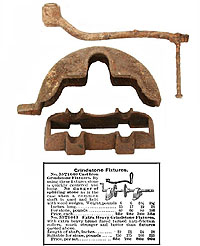
Archeologists found a steel axe head at the farm, but its butt end was split open and battered from heavy use. Its primary function was as an axe, but it also had been used as a wedge for splitting wood.
The wedge-like tool also would have been useful for prying out rocks to be used in fences. There were rock fences all over the Williams farm! As shown in the photo below, on the left, archeologists surveyed and took measurements and notes on all the fences.
Any tools with an edge, such as axes and hoes, would wear down after frequent use and need to be sharpened. Ransom Williams purchased a large grindstone fixture to sharpen his tools. The tool consisted of a large stone wheel that would spin when the machine was turned with the hand crank. To sharpen a tool, the blade was placed against the stone wheel as it turned. The archeologists found almost all the pieces of this tool, except for the stone grinding wheel.
